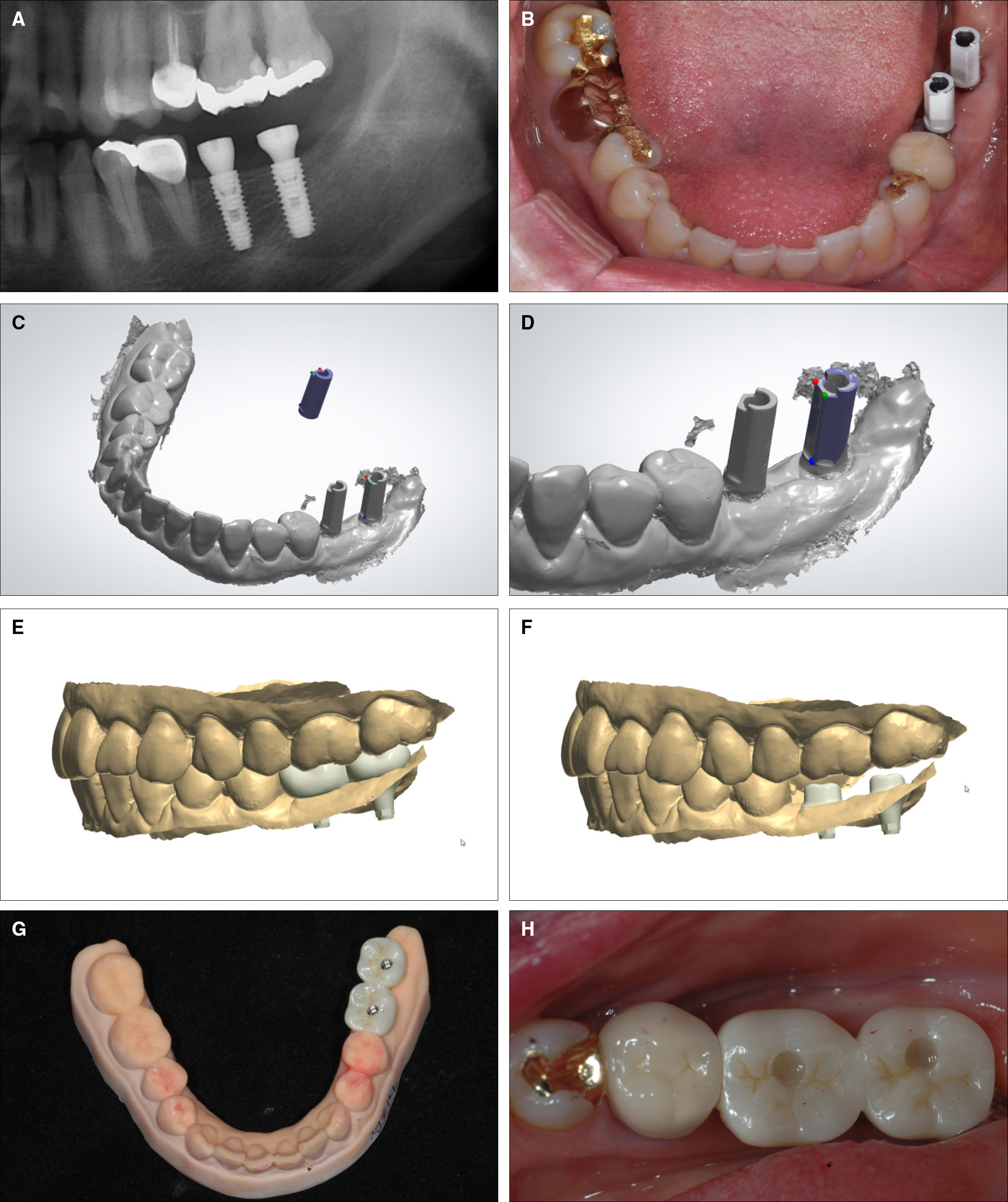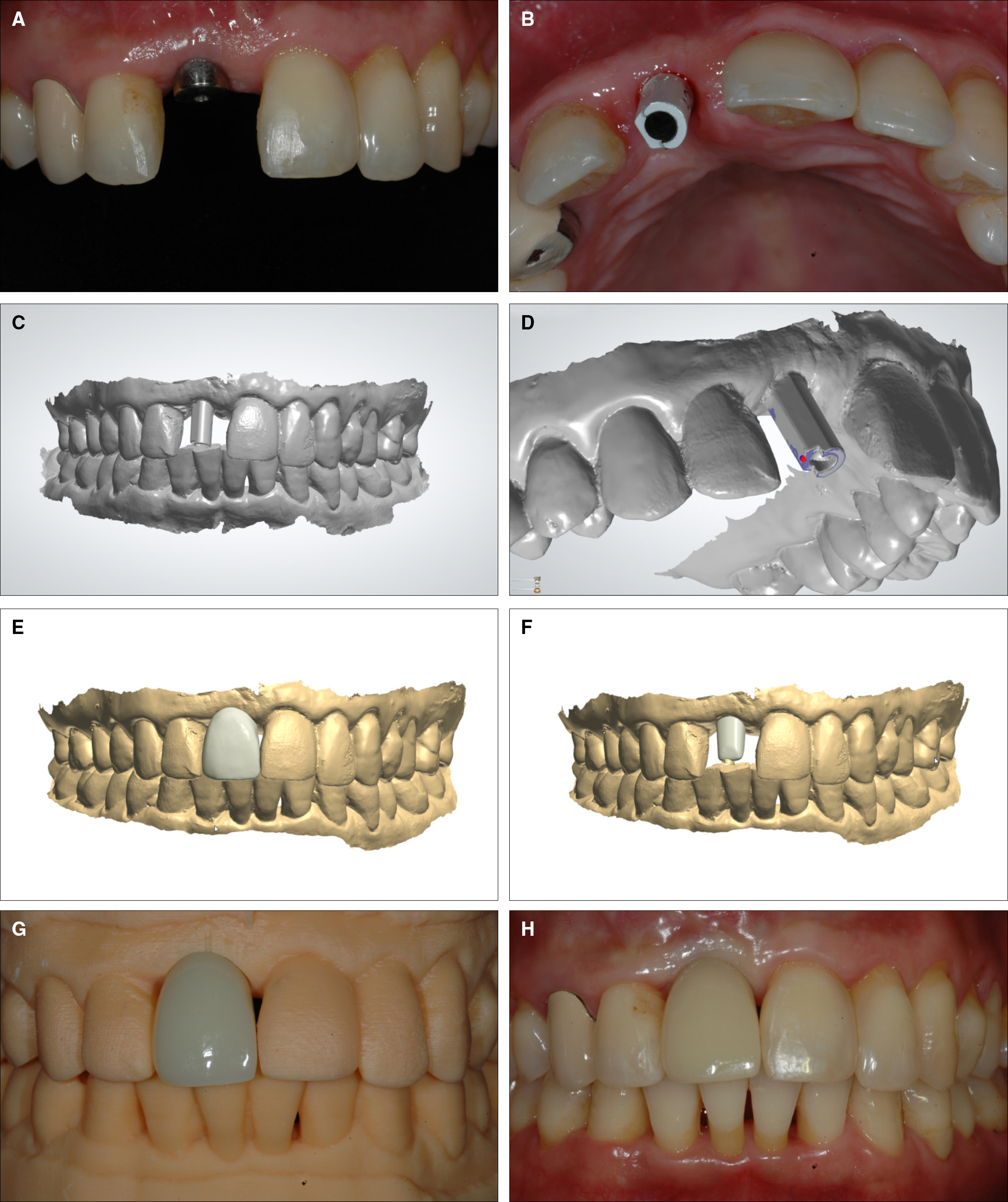J Korean Acad Prosthodont.
2015 Jul;53(3):256-261. 10.4047/jkap.2015.53.3.256.
Implant prosthesis using intraoral scanner: Case Report
- Affiliations
-
- 1Department of Prosthodontics, School of Dentistry, Chosun University, Gwangju, Republic of Korea. jhajung@chosun.ac.kr
- KMID: 2195257
- DOI: http://doi.org/10.4047/jkap.2015.53.3.256
Abstract
- Accuracy is the most important thing in implant prosthesis, for this reason it is essential procedure to check the accuracy of impression taking. However, impression material has its own error and the error occurs in model-making procedure. As an alternative way to this, using intraoral scanner can be suggested and many studies were issued reporting that there's no statistically significant difference in accuracy between intraoral scanner and conventional impression. Therefore, the purpose of this study is to report the process of making of implant prosthesis using intraoral scanner, which is more convenient, fast, accurate compared with conventional method.
Keyword
MeSH Terms
Figure
Reference
-
1. Del' Acqua MA, Arioli-Filho JN, Compagnoni MA, Mollo Fde A Jr. Accuracy of impression and pouring techniques for an implant-supported prosthesis. Int J Oral Maxillofac Implants. 2008; 23:226–36.2. Wee AG. Comparison of impression materials for direct multi-implant impressions. J Prosthet Dent. 2000; 83:323–31.
Article3. Del' Acqua MA, Cha ′ vez AM, Compagnoni MA, Molo Fde A Jr. Accuracy of impression techniques for an implant-supported prosthesis. Int J Oral Maxillofac Implants. 2010; 25:715–21.4. Cho SH, Schaefer O, Thompson GA, Guentsch A. Comparison of accuracy and reproducibility of casts made by digital and conventional methods. J Prosthet Dent. 2015; 113:310–5.
Article5. Gü th JF, Keul C, Stimmelmayr M, Beuer F, Edelhoff D. Accuracy of digital models obtained by direct and indirect data capturing. Clin Oral Investig. 2013; 17:1201–8.6. Papaspyridakos P, Gallucci GO, Chen CJ, Hanssen S, Naert I, Vandenberghe B. Digital versus conventional implant impressions for edentulous patients: accuracy outcomes. Clin Oral Implants Res. 2015 Feb 13.
Article7. Kim JH, Kim KB, Kim WC, Kim JH, Kim HY. Accuracy and precision of polyurethane dental arch models fabricated using a three-dimensional subtractive rapid prototyping method with an intraoral scanning technique. Korean J Orthod. 2014; 44:69–76.
Article
- Full Text Links
- Actions
-
Cited
- CITED
-
- Close
- Share
- Similar articles
-
- Axial displacement in single-tooth implant restoration: Case report
- Posterior single implant prosthesis using scannable healing abutment
- Restoration of implant-supported fixed dental prosthesis using the automatic abutment superimposition function of the intraoral scanner in partially edentulous patients
- Immediate loading of mandibular single implant by using surgical guide and modeless digital prosthesis: a case report
- Fixed implant rehabilitation of maxillary edentulous patient using intraoral scanning digital workflow: a case report



